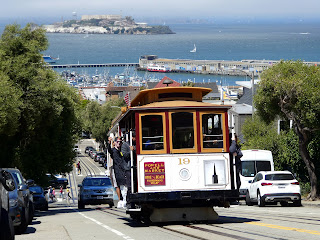One of the oldest precepts in Western government is ex post facto. The thing that makes the free world free. Euclidian zoning turns that concept on its head. Euclidean zoning functions by designating the thing (usually singular) that you can do with the land that you own and, if you wish to operate outside its defined parameters, then you must ask special permission. Such a flagrant violation of basic freedoms should be roundly condemned by everyone but, instead, it is almost universally supported in the United States by liberals and libertarians alike.
Euclidean zoning is a system of land use regulation that divides a municipality into different zones, each with its own set of permitted uses. This type of zoning was first introduced in the United States in the early 20th century, and it has since become the standard zoning system in most American cities.
Euclidean zoning has had a significant impact on the current concept of freedom and property rights. On the one hand, it has helped to promote order and predictability in land use patterns. This has been beneficial in some cases, such as by preventing incompatible uses from being located next to each other.
On the other hand, Euclidean zoning has also been criticized for restricting property owners' freedom to use their land as they see fit. For example, a property owner in a residential zone may not be able to open a business or build a home that is larger than a certain size.
In recent years, there has been a growing movement to reform Euclidean zoning. Critics of Euclidean zoning argue that it is outdated and inflexible and that it does not adequately reflect the needs of modern communities. They advocate for more flexible and mixed-use zoning policies that allow for greater diversity of land uses in a given area.
Here are some specific examples of how Euclidean zoning has affected freedom and property rights:
- Restrictions on home-based businesses: Many Euclidean zoning ordinances restrict or prohibit home-based businesses. This can limit the ability of people to work from home or to start their own businesses.
- Minimum lot size requirements: Euclidean zoning ordinances often have minimum lot size requirements. This can make it more difficult for people to afford housing, especially in urban areas.
- Restrictions on mixed-use development: Euclidean zoning ordinances often separate residential, commercial, and industrial uses into different zones. This can make it difficult for people to live, work, and shop in the same area.
- Bans on certain types of businesses: Some Euclidean zoning ordinances ban certain types of businesses, such as adult entertainment establishments or liquor stores. This can limit the choices available to consumers and can also restrict the ability of businesses to operate.
The debate over Euclidean zoning is complex and there is no easy answer. On the one hand, it is important to protect property owners' rights and to allow them to use their land as they see fit. On the other hand, it is also important to promote order and predictability in land use patterns.
Ultimately, it is up to each community to decide how to balance the competing interests of property owners and the public good. In recent years, there has been a growing trend towards more flexible and mixed-use zoning policies. These policies may offer a better way to balance the competing interests of property owners and the public good.

